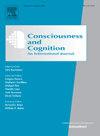Assessing the truth effect’s reliability and test–retest stability
IF 2
3区 心理学
Q2 PSYCHOLOGY, EXPERIMENTAL
引用次数: 0
Abstract
The finding that repeating a statement typically increases its perceived validity is referred to as the truth effect. Research on individual differences in the magnitude of the effect and its correlates is scarce and has yielded rather mixed results. However, any search for replicable relations between the truth effect and other cognitive or personality variables is bound to fail if the truth effect cannot be measured reliably at the individual level and if the effect is not a stable phenomenon. We conducted two experiments investigating the split-half reliability and test–retest stability of the truth effect. To operationalize the magnitude of the effect, Experiment 1 used the between-items criterion and Experiment 2 used the within-items criterion of the truth effect (Dechêne et al., 2010). In both experiments, the truth effect’s test–retest stability was found to be very low, probably due to a highly insufficient reliability of the measures that were used. While there may be meaningful and stable individual differences in the truth effect, our findings raise concerns about the usefulness of established indices and standard measures of the truth effect for personality and individual difference research.
评估真值效应的信度和重测稳定性
重复陈述通常会增加其感知有效性的发现被称为真相效应。对影响程度的个体差异及其相关因素的研究很少,并且得出了相当复杂的结果。然而,如果真相效应不能在个人层面上可靠地测量,如果真相效应不是一个稳定的现象,那么任何寻找真相效应与其他认知或人格变量之间可复制关系的研究都注定会失败。我们进行了两个实验来研究真相效应的劈半信度和重测稳定性。为了对效果的大小进行操作,实验1使用了项目间标准,实验2使用了真值效应的项目内标准(Dechêne et al., 2010)。在这两个实验中,发现真相效应的测试-重测稳定性非常低,可能是由于所使用的测量方法的可靠性非常不足。虽然真实效应中可能存在有意义和稳定的个体差异,但我们的研究结果引起了人们对真实效应的既定指数和标准测量在人格和个体差异研究中的有用性的关注。
本文章由计算机程序翻译,如有差异,请以英文原文为准。
求助全文
约1分钟内获得全文
求助全文
来源期刊

Consciousness and Cognition
PSYCHOLOGY, EXPERIMENTAL-
CiteScore
4.30
自引率
8.30%
发文量
123
期刊介绍:
Consciousness and Cognition: An International Journal provides a forum for a natural-science approach to the issues of consciousness, voluntary control, and self. The journal features empirical research (in the form of regular articles and short reports) and theoretical articles. Integrative theoretical and critical literature reviews, and tutorial reviews are also published. The journal aims to be both scientifically rigorous and open to novel contributions.
 求助内容:
求助内容: 应助结果提醒方式:
应助结果提醒方式:


